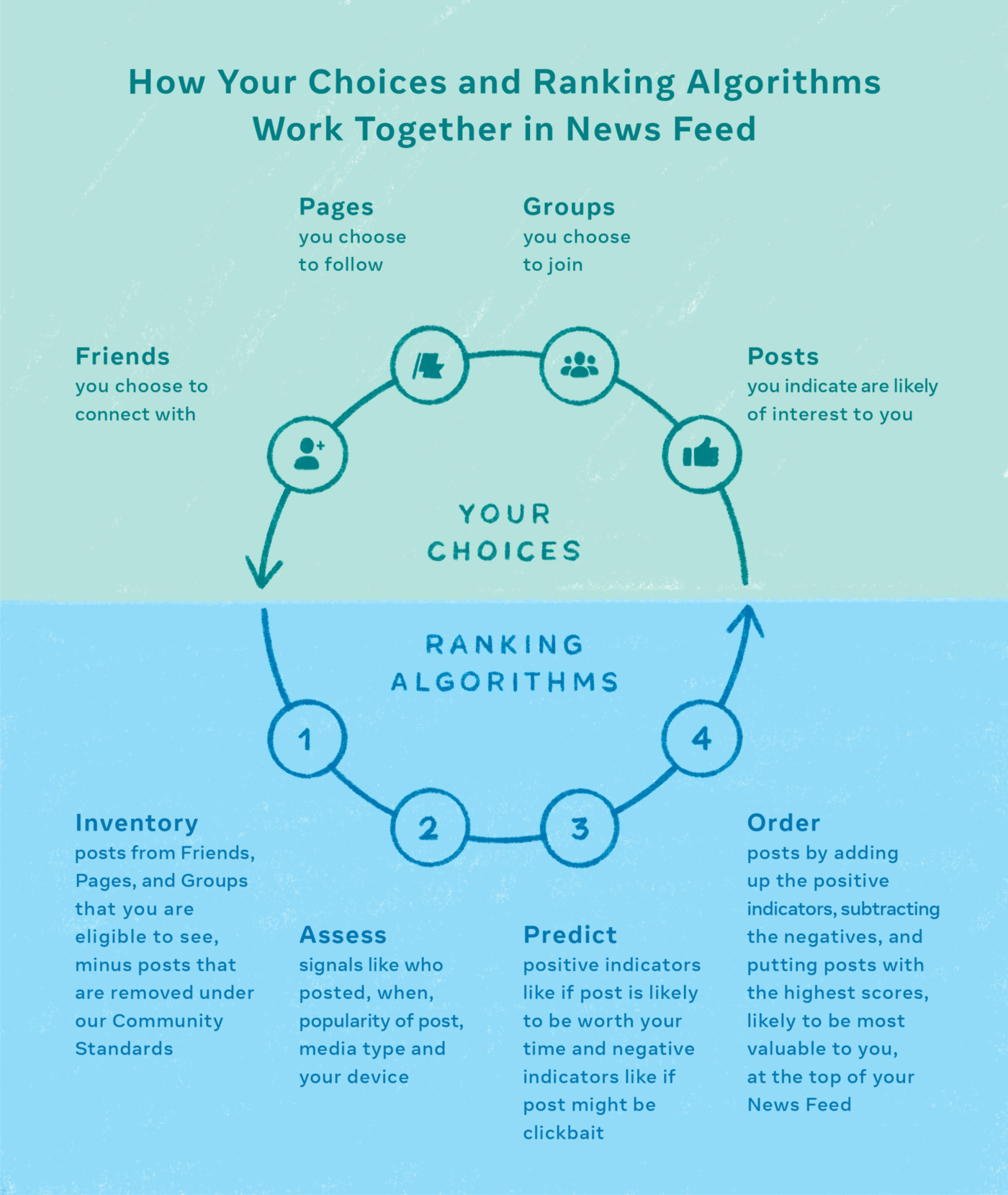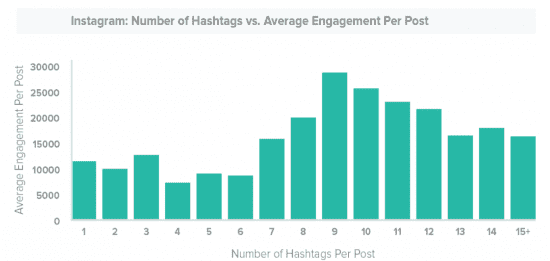If you’ve heard of social media shadow banning, you know there’s some controversy surrounding the term. Many accounts of users being shadow banned are anecdotal and lack any quantifiable evidence. This leads many people to assume shadow banning is a mere conspiracy theory.
[playht_player width=”100%” height=”175″ voice=”Mark”]
Engagement varies on social platforms anyway, and many are quick to complain of a shadow ban when they’re just being filtered by search criteria. A domain name’s page might appear low down in the rankings for the search “how to get a domain name NZ,” but does this always mean they’re being treated unfairly?
When people talk about shadow banning, what they’re often referring to is sudden and inexplicable drops in engagement. This is something that happens on all social media platforms.
So, is it really the meddling of tech entrepreneurs curating their platforms, or is something else at play?
What is Social Media Shadow Banning?

When a user is shadow banned, it means their posts, content, and comments are hidden from other users. Importantly, the user is not notified that the content is suppressed. We know this technique has been used to moderate online forums in the past.
Perhaps the first notable executive to claim ownership of “selective invisibility” was Daniel Ha of comment hosting company Disqus. Their system caused comments with negative ratings to be hidden from everyone except the original poster.
According to Ha, “The troll just thinks everyone has learned to ignore him, and he gets discouraged and goes away.” This process essentially matches the original definition of shadow banning.
That’s not always what people who complain of shadowbans are talking about though. Those comments from Daniel Ha date back to 2009. The online communication landscape has changed in the meantime, moving further toward social media platforms.
Do Shadow Bans Really Happen?
Does this prove shadowbans are happening on today’s social media sites? Not really, but it shows the techniques exist and can be useful for stopping trolling and harassment.
More recent reports suggest shadow banning still occurs on social media but in a more automated form. This notorious article shows Instagram users complained of shadowbans in waves back in 2017. Instagram officially denied shadow banning at the time.
This highlights that not everyone is on the same page about what constitutes a shadowban. To understand why shadow banning continues to be a hot topic, we need to look at how social media ranks and filters content.

Social Media: Is Downranking the Same as Shadow Banning?
Ranking is a known and accepted practice on social media. This is how content is curated on platforms like Twitter, Facebook, and others. Users are more likely to see content related to the kinds of content they engage with the most.
Downranking is what happens to negatively rated or poorly performing content. It happens automatically based on the platform’s search & recommendation algorithms. On the face of it, this isn’t quite the same as shadow banning.
There’s no human intervention. In theory, this is the best way to get people to the content they want to see. What happens when the systems become more subtle though? Consider this abstract from a patent filed by Facebook in 2019.
“The social networking system may receive a list of proscribed content and block comments containing the proscribed content by reducing the distribution of those comments to other viewing users.
“However, the social networking system may display the blocked content to the commenting user such that the commenting user is not made aware that his or her comment was blocked.”
This sounds very similar to the system described by the Disqus co-founder earlier, doesn’t it? The key difference is the decision is taken automatically, rather than with human oversight. Yet humans set the parameters of the algorithm at some point, so is it really so different?
The role of the algorithm
The common factor uniting users who complain of shadowbans is that the reasons for the “ban” are unknown. Algorithms are often viewed as something that takes away agency from us as users. They decide what content we see, and we don’t know exactly how they do this.
The truth is, as users we help shape what the algorithm decides to show us. The networks of friends and family we keep on our socials and the content we interact with all inform what we’ll see in the future.
Take a look at this diagram showing how Facebook’s algorithm makes decisions on how content is ranked.

We can see how a decision is formed by the ranking algorithm, but we still don’t know the criteria it’s operating on. This is complicated even further by AI-driven processes and machine learning. These systems can learn users’ habits over time and further adjust their feeds.
Deep learning AI is even capable of interpreting image data from photos and videos. Using different types of convolutional neural network (modeled on human neural patterns), they can filter content on this basis.
So, the “ban” part might not be real, but the “shadow” part certainly is. When an algorithm can evolve beyond its original capabilities, even its designers might not be aware of why it makes certain choices.
Which Social Media Sites Shadowban?
With all that said, how is a user supposed to make informed decisions about how and what to post? Remember that, at their core, these algorithms are supposed to help users find relevant and meaningful content.
This means the best way to avoid shadow bans is to know what kind of content the platform “likes.” For example, social media feeds such as Facebook and Twitter will often rate content that uses “engagement bait” lower.
Think of it this way: if you were trying to promote B2B hosted call centers, you’d want to make any tags relevant to the user, like “business comms”. Don’t just chase the latest trending phrases, especially if your content doesn’t fit.
Let’s take a look at a few of the more popular social platforms and their versions of shadow banning. Though, to be clear, each of these platforms would likely refer to it as ranking.
Meta (Facebook)
According to Meta’s president of global affairs, Nick Clegg, ranking involves many factors. The primary decider for whether content reach is reduced is its adherence to the community guidelines. Anything that breaches these can be flagged and removed.
Clegg goes on to describe situations where, for example, “There are types of content that might not violate Facebook’s Community Standards but are still problematic because users say they don’t like them. For these, Facebook reduces their distribution.”
This can include content that spreads misinformation or is deliberately targeted to stir up controversy. Facebook uses information from independent fact-checking organizations to vet such posts and links. Links from poorly sourced or clickbait articles will also be downranked.
Ultimately, decisions on any contentious issues are taken by humans. Facebook’s oversight board, made up of industry experts and civic leaders, reviews Facebook’s biggest content decisions. Even CEO Mark Zuckerberg cannot overrule this independent body.
For users, the best advice to avoid having your content reach limited is to check any links you post and avoid spamming. Only use tags that are relevant to your content and follow the community guidelines.
Back in 2018, Twitter officially denied shadowbanning users. The post also detailed some of the criteria they use for ranking content. When you search a term on Twitter, there are three main things that determine what content you see.
- Tweets from people you’re interested in should be ranked higher.
- Tweets that are popular should be ranked higher.
- Tweets from bad-faith actors who intend to manipulate or divide the conversation should be ranked lower.
The first two points are self-explanatory, but the last criterion needs some further explanation. How exactly does Twitter determine a “bad-faith actor?” Well, they use the activity of your account to come to this decision.
This includes information like whether your account is verified and how recently it was created. It also covers activity e.g. who you retweet and how many original posts you make vs retweets, who you follow, etc. Lastly, who follows, mutes, and blocks you plays a part.
So, if you want to avoid being downranked on Twitter, start with authenticating your account. Verify your email address and use a real profile picture. Make sure you read links before retweeting too, so you’re not accidentally spreading something that’s later labeled false.
Another important factor, especially for business accounts, is to avoid inflammatory statements and posting spam. Posting the same thing too often or deliberately seeking controversy will often lead to a lot of blocking and muting of your account. This will hurt future content performance.
Twitter is one of the prime recipients of users complaining about mysterious shadowbans. This is, at least in part, down to the lack of transparency on how exactly they rank content factors like links, images, hashtags, and more.

In 2020, Instagram CEO Adam Mosseri also insisted shadow banning is “not a thing” on the platform. However, it’s certainly true that Instagram has quietly downranked or hidden content that’s deemed inappropriate.
The platform caught some controversy in 2019 for quietly hiding hashtags related to pole dancing. This was despite the fact the affected posts didn’t break any specific guidelines. Instagram said this was an error.
Separately, though, Instagram has confirmed it filters results in the explore and hashtag pages based on criteria that aren’t defined in the community guidelines. “Sexually suggestive” content seems particularly vulnerable.
It supports family-friendly content, at least on the face of it. That being said, innocent community members can still be affected. Many fitness instructors have complained that videos and images featuring swimwear or light exercise clothing get unfairly “censored” by these policies.
The best advice we can give is fairly simple: avoid posts involving violent or suggestive imagery. As with other platforms, don’t overuse hashtags or spam either. Instagram says they’re looking for content with the widest possible appeal, so remaining PG is advisable.
Five Steps You Can Follow to Avoid Shadow Bans
As you can see from the examples above, there are some best practices for ranking content that are common across multiple platforms. This means there are general rules you can follow to avoid hurting your content reach on most major social media sites.
Step 1: Observe the site rules
This is a big one. If you don’t follow a site’s rules, don’t expect it to keep your content up. This isn’t the same as censorship. You agree to the rules when you create an account, so the business has every right to remove this kind of content.
It’s easy to forget sites set these rules with a specific content goal in mind, be that entertainment, education, or otherwise. Following the spirit of the rules is better than following the letter of them.
If you find a loophole, it can be tempting to exploit this for additional engagement. In reality, though, as soon as the platform realizes its algorithm is being manipulated, it’ll make changes. If that’s all your content relies on, you’ll be back to square one.
Step 2: Don’t spam
Sites like Instagram have an “ideal” number of posts a user should make per day. This isn’t a set number though: it’s a data trend. If you post too frequently, users will start to avoid your content. The same happens if you make multiple posts about the same thing.
This can seem like algorithmic suppression, but it’s just the user’s engagement habits in action. Stick to original content and avoid frequent reposts. If you’re advertising free video chats, for example, don’t spam #funny on all your videos – stick to more appropriate terms.

Step 3: Don’t repost content you haven’t checked
This is the online equivalent of passing on gossip you overheard. In an online landscape where thousands of users can see posts, this can create a lot of confusion. Social media sites have implemented fact-checking processes almost universally to help combat this.
That doesn’t mean everything you see posted is true. Fact-checking only happens after content has been shared. So, if you share a video before watching it, and then tomorrow it turns out that video was fake, this will negatively impact your account.
Step 4: Learn from other users
Look at successful influencers on the platform. Consider how their posts are formatted, when they post, how often, and what kind of content works for them.
Studying similar accounts can give you an idea of what to expect when engagement varies. You won’t always be able to determine why a post did or did not perform. Maybe you used applause software to build hype in one video and it took off. Expect highs and lows.
For businesses, you can use real-time customer data for comparison. If marketing content underperforms, seek opinions on this, while at the same time checking your customer satisfaction score.
Step 5: Treat others with respect
This is good advice for online interactions in general. Treat others how you want to be treated.
Consider that other users curate their own social media feeds and filter out content they disagree with over time. Loud or controversial accounts might generate a lot of engagement upfront but will find it difficult to retain a consistent audience.
Be pleasant and respectful to ensure positive long-term relationships online.
Final Thoughts: Play to the Crowd
You can’t always be the center of attention on a social platform. The most important thing is to know your audience and respect their sensibilities. Understand what kind of content your followers respond to, and you can successfully optimize your social engagement and reduce the likelihood of experiencing social media shadow banning.


